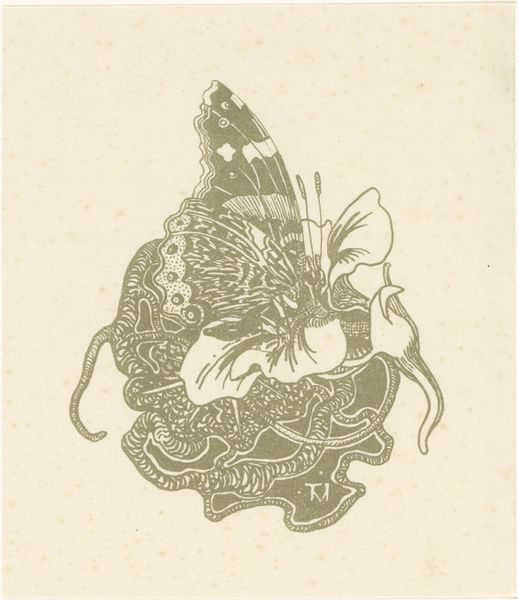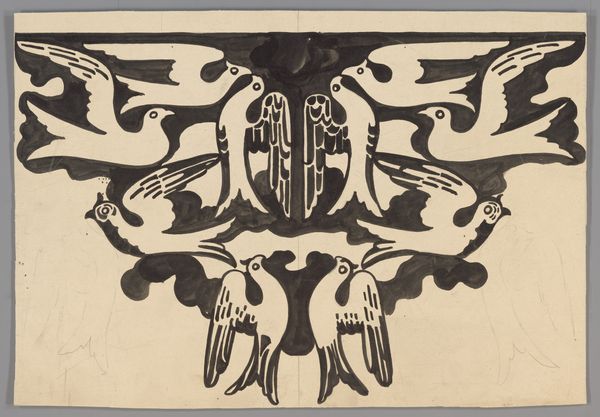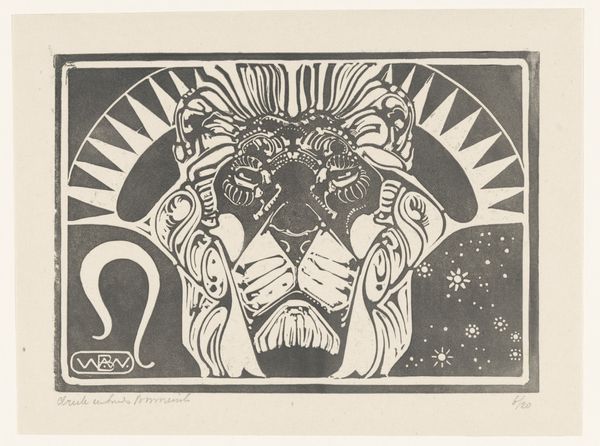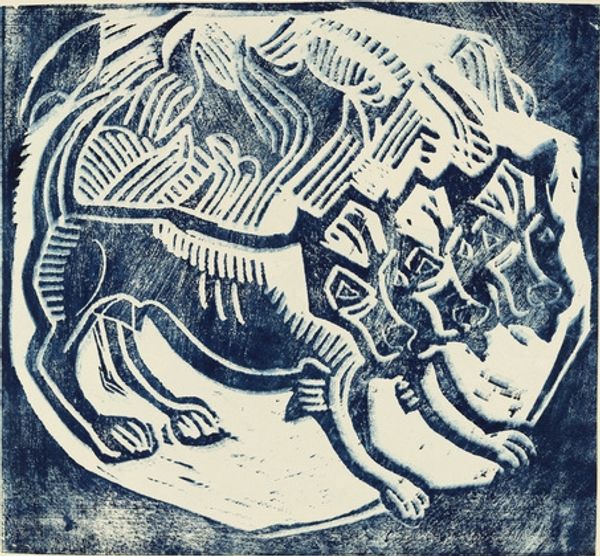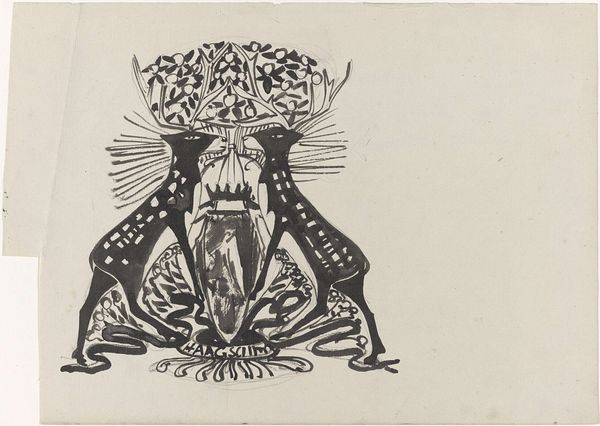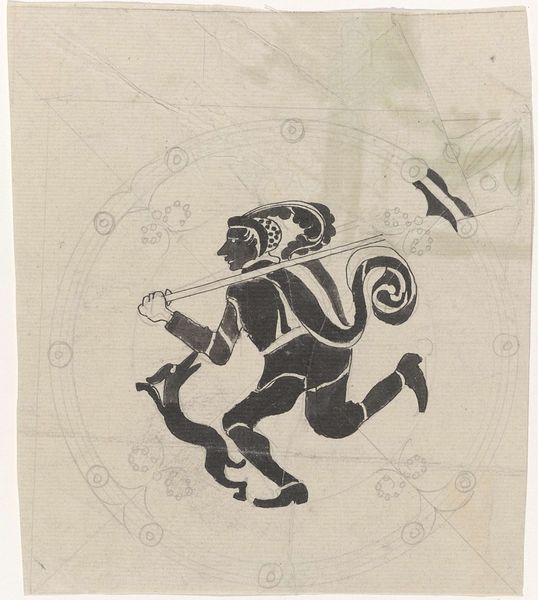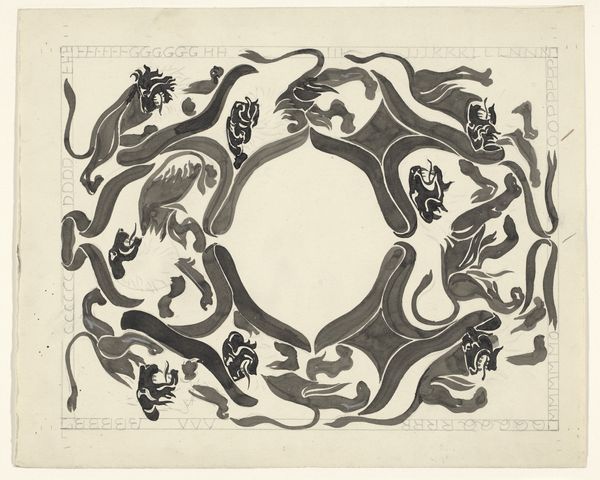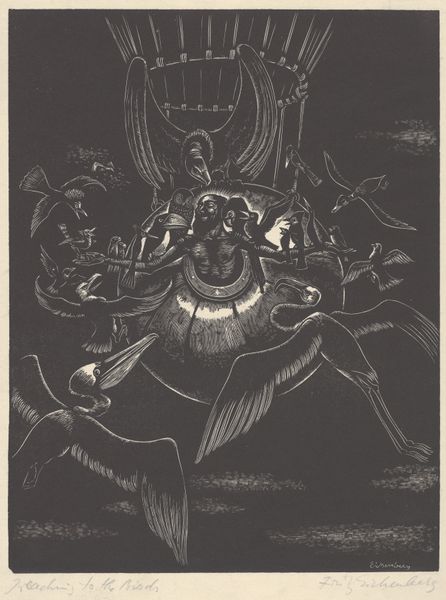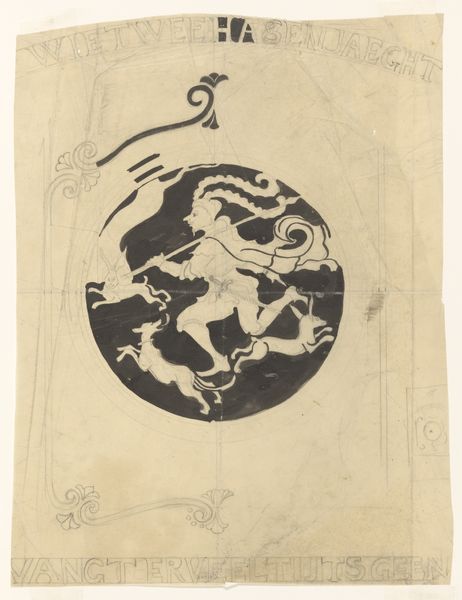
drawing, paper, ink
#
portrait
#
drawing
#
quirky illustration
#
childish illustration
#
cartoon like
#
cartoon based
#
asian-art
#
junji ito style
#
cartoon sketch
#
figuration
#
paper
#
personal sketchbook
#
ink
#
ink drawing experimentation
#
geometric
#
sketchbook drawing
#
cartoon style
Dimensions: height 198 mm, width 134 mm
Copyright: Rijks Museum: Open Domain
Curator: Here at the Rijksmuseum, we have a drawing entitled “Kop van een wajangpop,” or “Head of a Wayang Puppet” made before 1942. It's an ink drawing on paper. What strikes you first about it? Editor: Its stylization. It reminds me of comic strips but it seems culturally significant. What can you tell me about wayang? Curator: Wayang is a traditional form of puppet shadow play found in Indonesia. This head would have been part of a larger puppet used to tell stories from Hindu epics. Editor: So this is more than just a drawing, it's actually documenting a piece of living performance culture, capturing the design and aesthetic of a puppet character. How were these puppets typically viewed and utilized in their original cultural context? Curator: These puppets were often made of leather and elaborately painted. They were used in performances that could last for hours, often conveying moral and religious teachings. Editor: It makes me think about the politics inherent in cultural transmission and performance. What messages were being conveyed through these figures and the stories they enacted, and who had the power to shape those narratives? Was it purely educational and entertaining? Curator: Not always; the shadow puppet theatre played a key role during Indonesian independence. It was a safe way to allude to political unrest and colonial trauma. Editor: It is such a wonderful and important symbol for both cultural preservation, resistance and social commentaries that must be understood. Do you believe contemporary artists continue to see them this way, with the same purpose? Curator: Many artists indeed find wayang to be both inspiring and important. It still plays a relevant and ever changing role in cultural representation. Editor: A brief but powerful glance into an art form steeped in social significance! Curator: Indeed, a compelling reminder of art’s multifaceted roles.
Comments
No comments
Be the first to comment and join the conversation on the ultimate creative platform.

